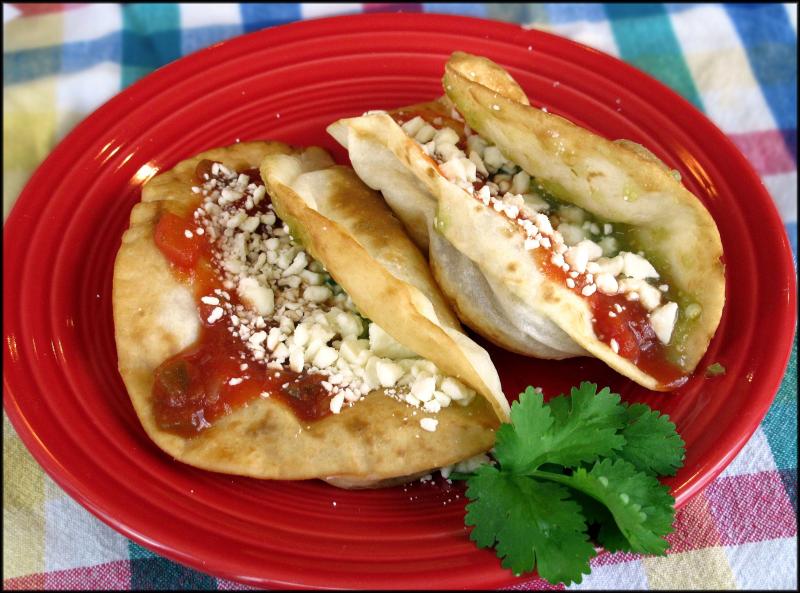Time to celebrate Cinco de Mayo
Saturday is Cinco de Mayo (Spanish for May 5). Not to be confused with Mexican Independence Day (Sept. 16), tomorrow marks the anniversary of the Battle of Puebla in 1862. Although this battle didn’t end the French invasion of newly independent Mexico, it certainly slowed the French army’s progress toward Mexico City.
On that day, a small, local group of Mexican troops successfully repelled a French force twice their size, giving the new nation an unexpected and highly symbolic victory. Their surprising defense against such a strong foe became a rallying cry for the Mexican army, and the following year President Juárez declared a national holiday.
Here in America, Cinco de Mayo celebrations range from restaurant specials on nachos, tacos and guacamole to prominent advertisements from beer and tequila companies. In Puebla, Mexico and the surrounding region, modern-day Cinco de Mayo remembrances include parades, battle re-enactments, jet fly-overs and culinary festivities.
The historic center of the city of Puebla (the capital of the State of Puebla) has been named a UNESCO World Heritage Center for its extensive inventory of 16th and 17th century cathedrals. In addition, the city is considered the gastronomical capital of Mexico, which recently received UNESCO Intangible Cultural Heritage of Humanity recognition for the traditional cuisine of the country.
Mexico’s signature dishes retain the names, ingredients and cooking practices dating back to the pre-Columbian era and incorporating contributions from other cultures. Puebla played an important role in this culinary evolution, inventing the signature dish of Mexico, mole poblano, as well as the original street food, chalupas.
Mole is one of the most complicated and nuanced sauces you will ever encounter. Its name comes from either the Aztec word for sauce, mulli, or the Spanish word moler, to grind. This dark, rich sauce is typically served over turkey as the centerpiece of celebratory meals. The daunting ingredient list includes several types of chiles, ground spices, toasted seeds, raisins, almonds and chocolate. Legend holds the sauce was created by the nuns of Santa Rosa convent in Puebla to honor a visiting bishop in the 17th century.
Before the arrival of the Spaniards who built the city of Puebla, the nearby town of Cholula was one of the largest cities, renowned for its enormous pyramid dating from the earliest centuries AD. The throngs of worshippers visiting the pyramid bought portable snacks, including folded corn tortillas filled with spicy sauces, the ancestor of the chalupa. The name for this simple dish is believed to derive from the canoe-like boats called chalupas used by the Aztecs to navigate the canals of their ancient capitol Tenochtitlan (now Mexico City).
Chalupas are made from thick corn tortillas that puff slightly when they’re fried. These are topped with salsa verde or salsa roja, shredded lettuce and queso fresco. If you look on the internet for images of chalupas, you will be sure to encounter tostadas incorrectly labeled. The key differences are the thickness and puffiness of the chalupa tortillas compared to the thin, flat tortillas in tostadas.
The chalupas in the photo approach the traditional design of the Aztecs’ “little boats,” but instead of homemade corn tortillas, I made these from flour tortillas, folding them gently after frying. Packaged Mexican food options now include boat-shaped corn tortillas, so you can skip that cooking step. I’ve included a recipe for salsa verde, which can also be found in most groceries. If you’d prefer not making this salsa roja, any jarred red salsa will work. If queso fresco isn’t available, substitute finely crumbled feta cheese. And, happy Cinco de Mayo!
Chalupas*
oil for frying
6 small flour tortillas
1/2 C salsa verde
1/2 C salsa roja
1/2 C queso fresca
1/4 C finely shredded lettuce
Preheat oven to 400 F. Line a baking sheet with aluminum foil; set aside. Heat 1/2-inch of oil in a deep skillet over medium high. When a drop of water bounces, it is ready. Place one tortilla in the pan and cook until golden and puffed, turn over and cook the other side. Remove from oil and drape over a glass (on its side) or fold gently and allow to cool on paper towels. Cook the remaining tortillas. Spread salsa verde on half the inside of the tortilla; spread the other half with salsa roja. Sprinkle cheese into each tortilla and place on the baking sheet in a single layer. Heat in the oven just until cheese starts to melt, about 3 minutes. Garnish with lettuce and serve immediately. Yield: 2 servings. *Note: As with tacos and tostadas, chalupas are often filled with other extra ingredients, including shredded meat and refried beans.
Salsa Verde
1 t olive oil
1 jalapeño pepper
5 peeled & chopped tomatillos
1/4 C diced onion
1/4 C finely chopped cilantro
2 garlic cloves
salt & pepper to taste
Add oil to a skillet over low. While oil heats, seed and dice the jalapeño. Add pepper, tomatillo and onion to the skillet. Cook gently for about 5 minutes. Add garlic and continue cooking until the tomatillos start to brown slightly. Transfer mixture to the bowl of a blender or food processor. Add cilantro and purée until smooth. Season to taste with salt and pepper. Store in the refrigerator in a sealed container.
Salsa Roja
5 halved Roma tomatoes
1 quartered onion
2 halved serrano chiles
2 halved garlic cloves
1 t salt
3 to 4 C water
13 sprigs stemmed cilantro
2 T olive oil
salt, to taste
Combine tomatoes, onion, chiles, garlic and salt in a saucepan.
Add just enough water to cover and bring to a boil. Reduce heat to low and simmer 20 minutes. Transfer to a blender or food processor; add cilantro and purée. Heat the oil in the same saucepan over medium. Return the sauce mixture to the pan and reduce heat to low; simmer for about 20 minutes. Season to taste with salt. Store in the refrigerator in a sealed container.






















































